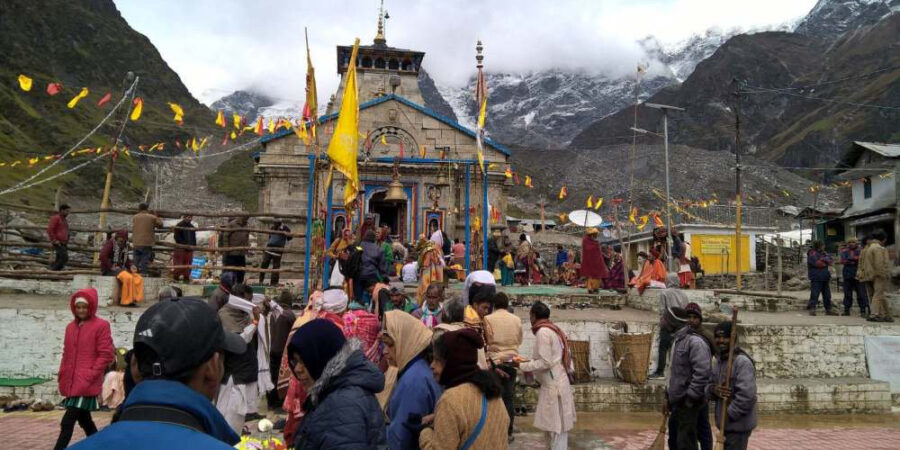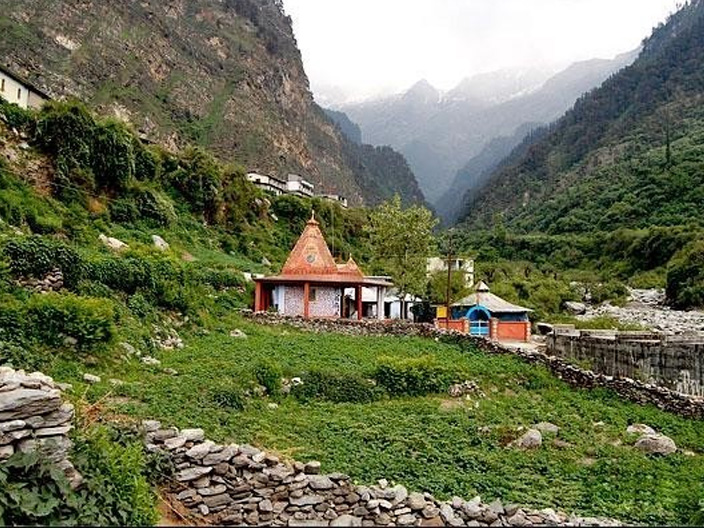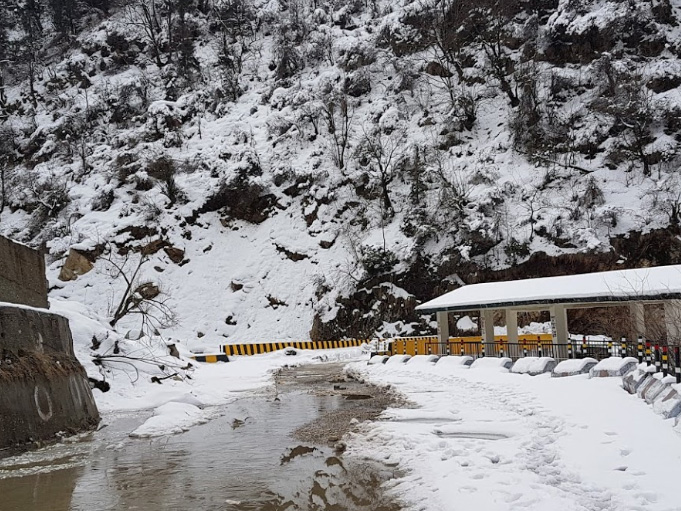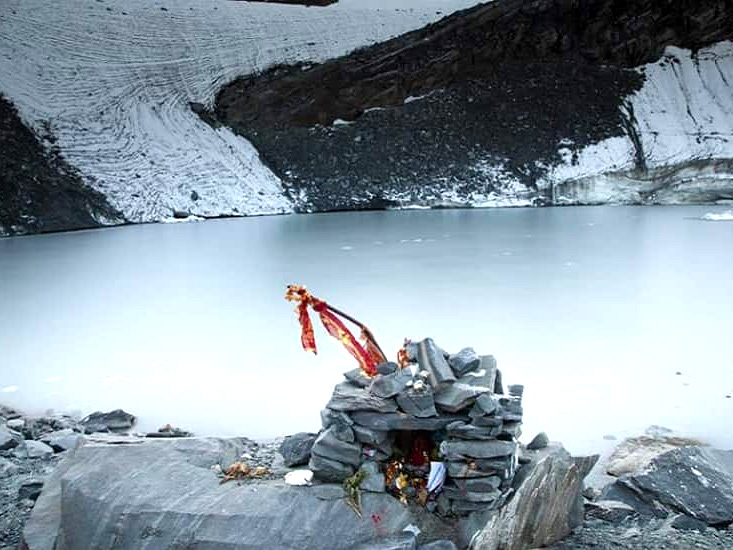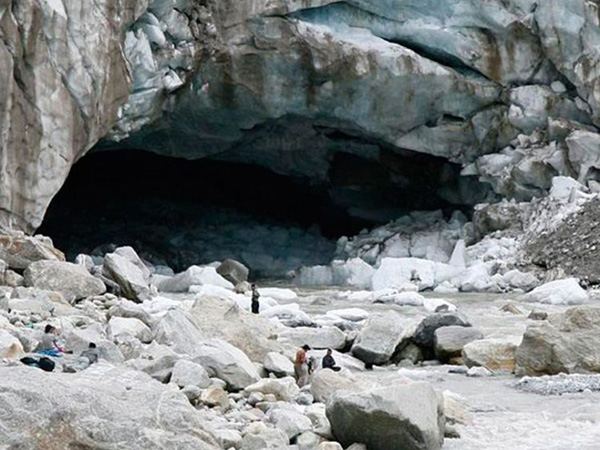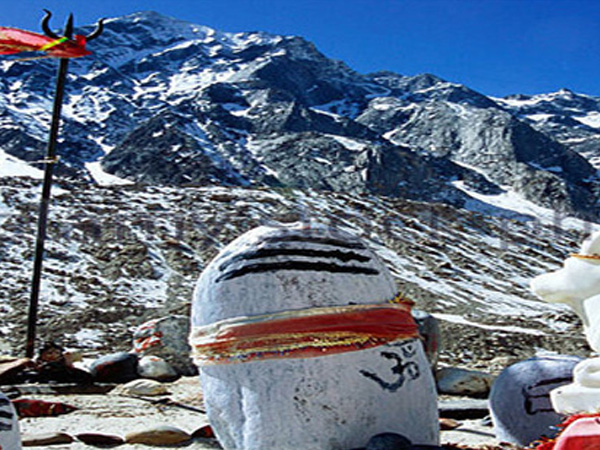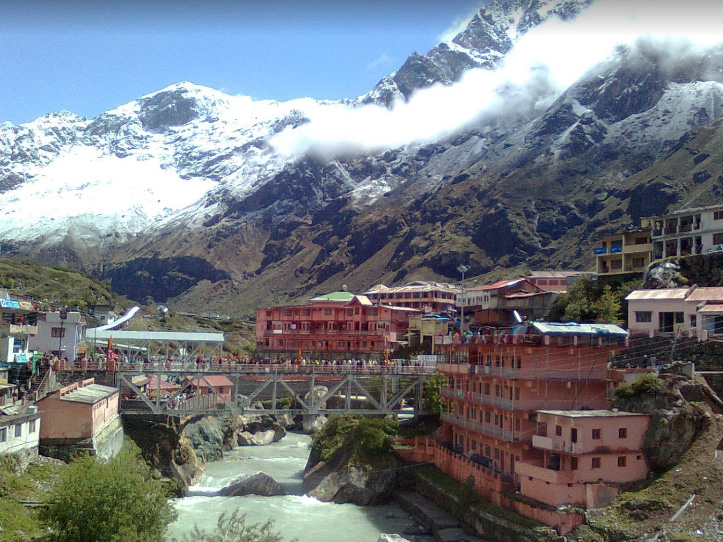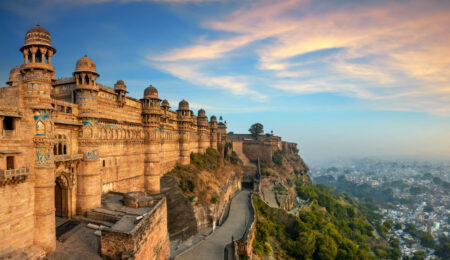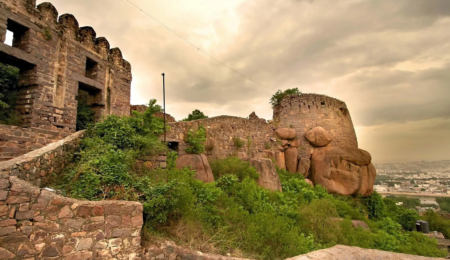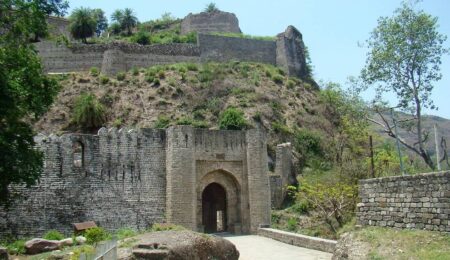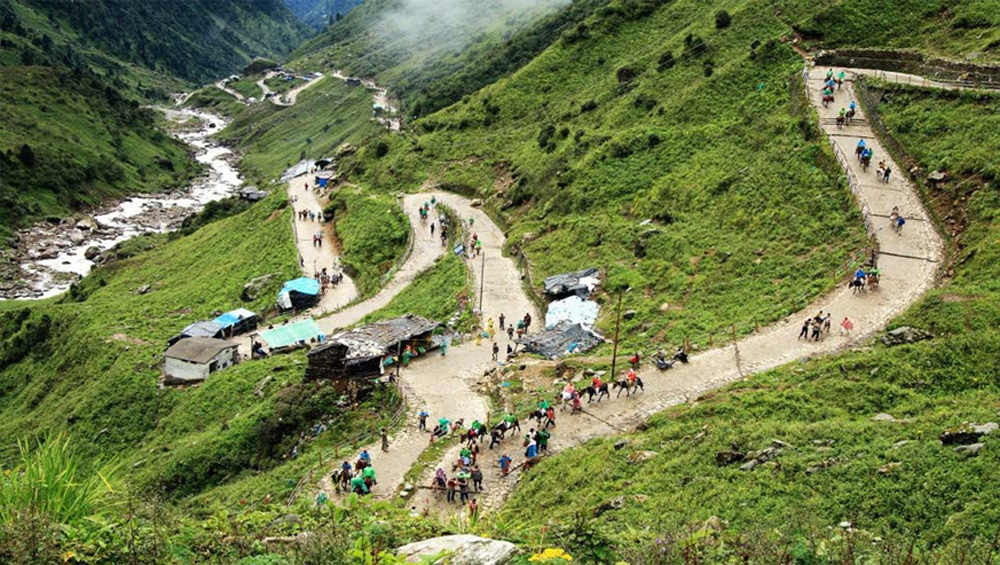
Millions of devotees undertake this arduous pilgrimage during the yatra season between April and November. Traditionally, the yatra is done from west to the east commencing from Yamunotri, then Gangotri and finally to Kedarnath and Badrinath. Rishikesh and Haridwar is a convenient place to start the religious Char Dham Pilgrimage.
Yamunotri
Well, Yamunotri is the source of Yamuna River and also the first stopover of Char Dham Yatra. The Yamunotri shrine stands on the western flank of the Bandarpoonch peak. The root of the Yamuna River is the Champsar Glacier near Yamunotri though it is very difficult to reach the exact source of the holy river, pilgrimage flock to the shrine which is open from May to November. Legend has it that the sage, Asti Muni, used to reside at this private spot. Also, the hot springs here are an attraction. This beautiful temple of goddess Yamuna was built in the 19th century by Maharani Gularia of Jaipur.
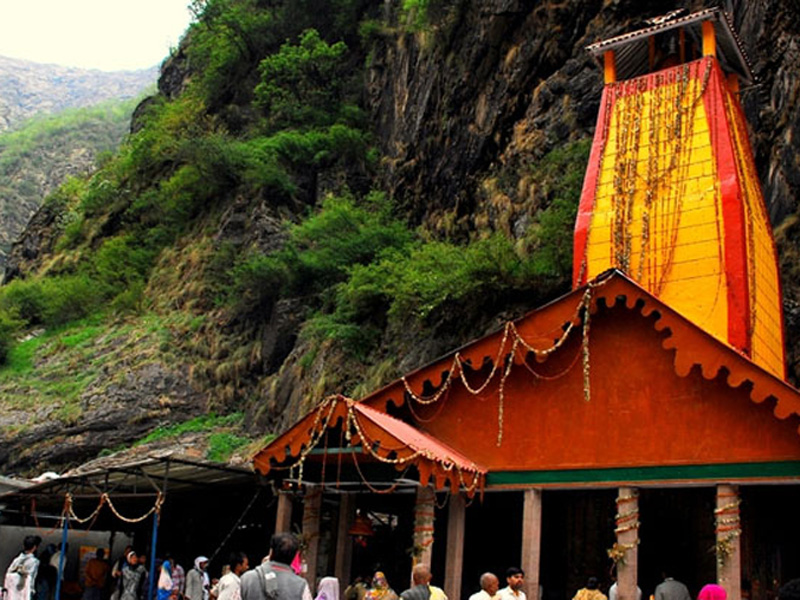
Here, holy dips in the tank filled by hot spring and cooking rice in its water are part of the rituals. There are a number of thermal springs in the locality of Yamunotri. The most important of this Surya kund has a temperature of 190 degrees F. Many pilgrims tie rice and potatoes in a Muslim cloth, and soak in water to be cooked. There’s a rock pillar Divya Shila that is to be worshipped before entering the Yamunotri temple. The pujaris of Yamunotri come from the village of Kharsali near Jankichatti. They are the administrators of the sacred place and perform religious customs well versed in Shastras. Yamunotri temple remains cold almost throughout the year while in summers it becomes a little pleasant. The temple closes right after Diwali and its deity is moved to Kharsali Village to be worshipped for the next six months of the winter season. Therefore, the best periods to visit the Yamunotri temple are during May- June, and September- October. It remains opens for pilgrims from 6:00 AM to 8:00 PM and the Aarti Time at Yamunotri Mandir is from 6:30 pm to 7:30 pm.
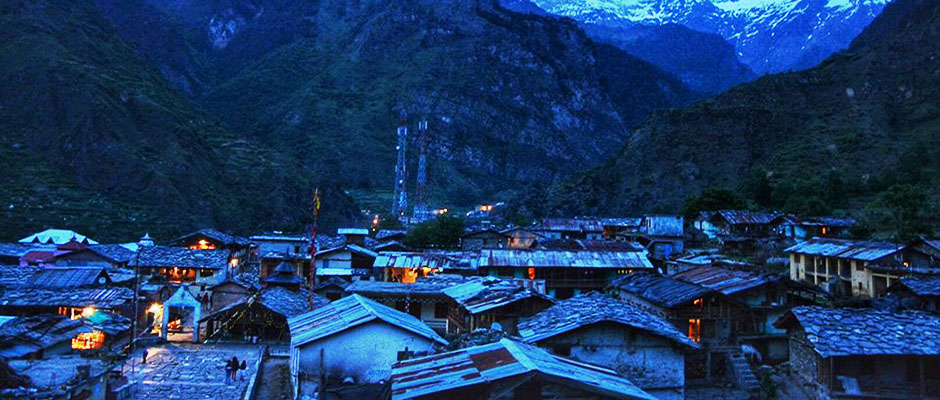
Around Yamunotri:
Divya Shila: It is located at 3,235 meters high. The Yamunotri temple is surrounded by thermal springs and the Divya Shila which literally means heavenly divine rocks. It is the place which has to be worshipped before entering the main Yamunotri temple. According to Skanda Purana, with a mere touch of sacred rock one can achieve spiritual liberation.
Surya Kund: Here, the temperature is around 88 degree C. It’s a hot water spring that is formed due to volcanic heat. This blistering water immediately cooks potatoes and rice tied loosely in a piece of cloth, people consider them as a religious offering from Goddess Yamuna.
Sapta Rishi Kund: It’s a natural stunning lake with flowing water and the pebbly blank will require you to walk along the track to reach Sapta Rishi Kund. This lake is considered as the original place where the Yamuna originates. Located at the distance of 10 km from Yamunotri Temple, the lake is the original source of Yamuna River fed by Champsar Glacier situated in the upper parts of the massif formed by Bandarpoonch Mountain.
Jankichatti: A place of relaxation is here; admire the beauty of the Gigantic Mountains all day long in this natural bed of thermal springs. It’s a small town that has the transport facility located on the way to Yamunotri, it acts as an alternative base for treks and many pilgrims take here a night halt.
Hanuman Chatti: It’s a confluence of Hanuman Ganga and Yamuna Rivers. At the location of 13 km from Yamunotri and 8 km from Jankichatti, it’s a small hamlet on the way to Yamunotri at 2400 meters altitude. Well, the best trekking excursion is towards darwa Top and Dodi Tal and trek to Dodi Tal from where the view is enchanting.
Gangotri
Then Gangotri is the second stoppage of the Char Dham Yatra and it is situated in Garhwal Himalayas at an elevation of 3048 meters. The Gangotri shrine is seen as the spiritual source of Hinduism’s most sacred river “The Ganges” and it is considered as the holiest river in the country. According to Hindu mythology, Ganga, the stream of life, was granted as a reward to King Bhagirath for severe penance, and the river is worshipped as a deity. The Gangotri Temple was built by a Gorkha General Commander Amar Singh Thapa, in the 18th century, is situated on the left bank of Bhagirathi river, this beautiful temple was renovated in the 20th century by the ruler of Jaipur. The temple is nestled amidst the beautiful surroundings of deodars and pines. It lies close to the holy rock or the “Bhagirath Shila” where King Bhagirath had worshiped Lord Shiva.
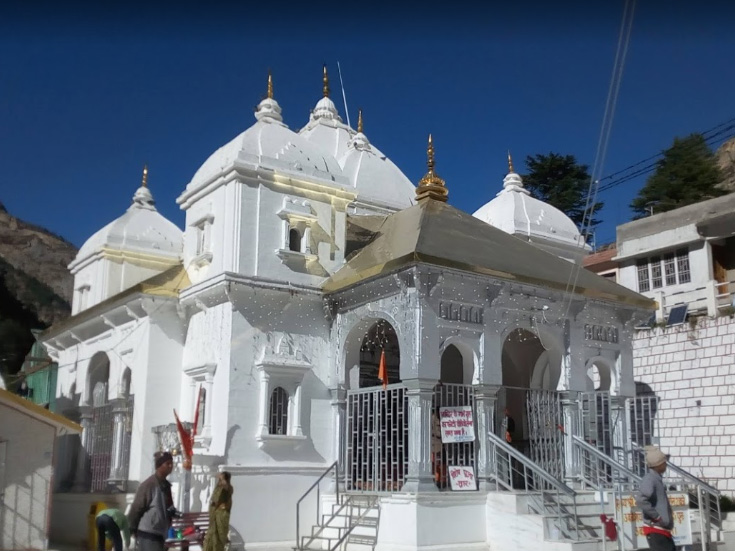
The pujaris and bhramins belong to the village of Mukhwa. The water from Gangotri is carried to offer to Lord Shiva. Fortunately, it is believed that water has nectar in it and will soothe the throat of Shiva who gulps the poison. Due to its high altitude and location, Gangotri Dham remains open to the devotees for a brief period of six months, the end of April or beginning of the month of May is chosen for the opening of the portals of this sacred Hindu Shrine in Uttarakhand as the snow melts and the temperature starts to become bearable. Therefore, the best time to visit Gangotri is between April and November, in fact, April to mid-June and October to mid-November is best. Gangotri Temple opens in the morning at 6:15 am to 2:00 pm and the evening timings are from 3:00 pm to 9:30 pm.
Around Gangotri:
Submerged Shivling: There’s also an “underwater shivling”, which is believed to be the site where Ganga descended into the matted locks of Lord Shiva. Dividing it into seven streams, Lord Shiva saved earth from the massive force of Devi Ganga. The submerged shivling is perhaps the most sacred spot where Ganga, the stream of life touched mother earth for the very first time.
Bhairon Ghati: It’s a temple of Bhairav Nath amidst thick forests which is 10 km downstream from Gangotri and situated near the confluence of Jadh Ganga and Bhagirathi rivers. Now, moving about 3 km from Bhairon Ghati one can reach Lanka Chatti to witness one of the highest river bridges of the region that is the bridge over River Jhanvi.
Gaumukh: It’s an enchanting lake surrounded by majestic peaks. At the location of 18 km trek from Gangotri, the Gangotri Glacier is situated at a height of 4238 meters. The water of the Ganges is 100% pure in nature and contains absolutely no impurities. The source of river Bhagirathi is also considered the true source of river Ganga.
Kedarnath
Another one is Kedarnath, it’s at the head of the Mandakini river, and amongst the holiest pilgrimage for the devout Hindu. Kedarnath temple built in the 8th century AD is dedicated to Lord Shiva. The conical rock in its sanctum is the idol and outside the temple door, a large statue of Nandi stands as a guard. As stated by a legend Lord Shiva wished to escape the Pandavas and had taken refuge in Kedarnath in the form of a bull. When the Pandavas followed him here, too, he dived into the ground leaving behind him a hump on the surface. His conical protrusion is worshipped as the idol in the shrine.
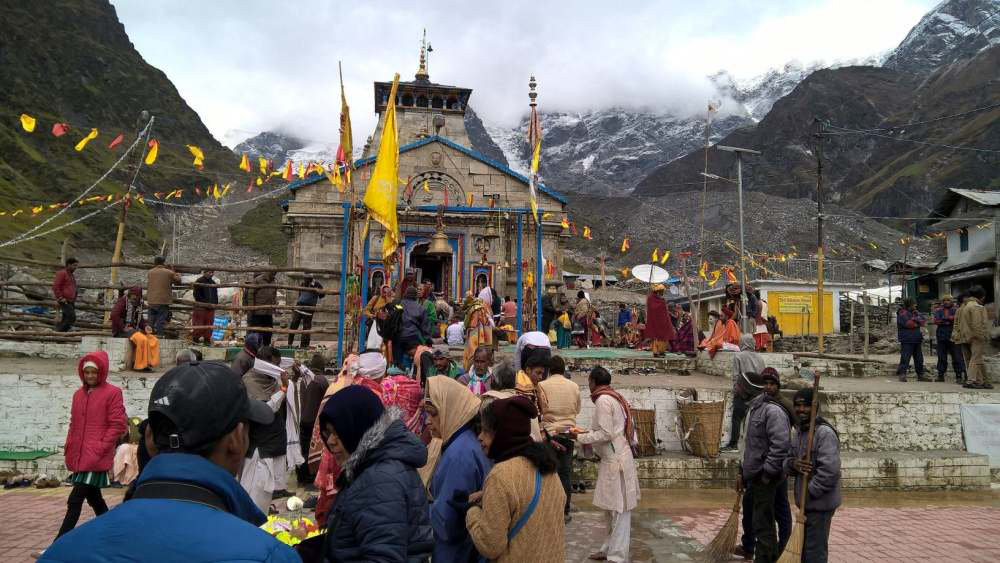
Subsequently, the remaining parts of the body are worshipped at four other places- the arms at Tungnath, mouth at Rudranath, Navel at Mahamaheshwar and hair at Kalpeshwar. Together with Kedarnath, these places are known as Panch Kedar. The lingam is one of the 12 jyotirlingas. Kedarnath Temple darshan is closed from 3:00 pm to 5:00 pm so plan to be at the temple before 3:00 pm. Before 3:00 pm visitors can touch idle and do inauguration with Ghee. After 5:00 pm no one can touch idle but can get Darshan with a distance. At this time idle is in Emperor costume. The temple at Kedarnath enshrining the jyotirlingas of Shiva opens only six months of a year that is from April to November when the sun enters the zodiac sign of Aries and it is closed when the sun enters Scorpio.
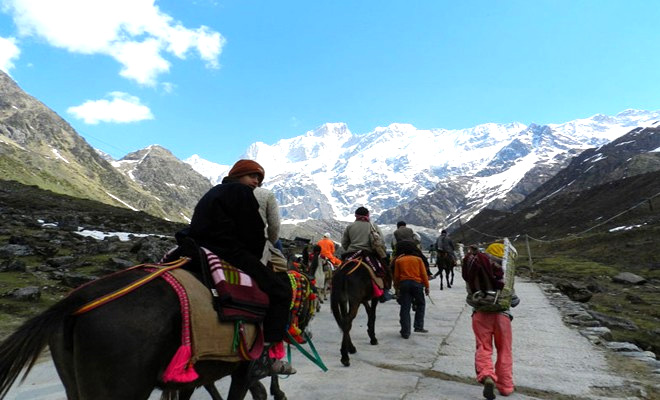
Around Kedarnath:
Shankaracharya Samadhi: It is located just behind the Kedarnath Temple. Adi Shankaracharya after establishing four sacred dhams is said to have gone into his Samadhi here at an age of 32 years.
Chorbari: Here, river Mandakini emerges from and later merges into the Alakananda Rudraprayag. It’s located at a distance of 3 km from Kedarnath temple.
Badrinath
Lastly, Badrinath is considered as the holiest of the main four shrines of Uttarakhand and it is located between the two mountains Nar and Narayan, the Dham is a majestic sight as well as the most important of all the Char Dhams. Many tourists come here every year to this sacred Badrinath town to seek out blessings and to get a glimpse of the famous temple of Shri Badrinathji. The temple is dedicated to Lord Vishnu and was built about two centuries ago by Kings of Garwal. The temple is divided into three parts the Garbha, the Darshan Mandeep and Sabha Mandeep. The principal idol is of black stone and represents Vishnu seated in a meditative pose and flanked by Nara Narayan.
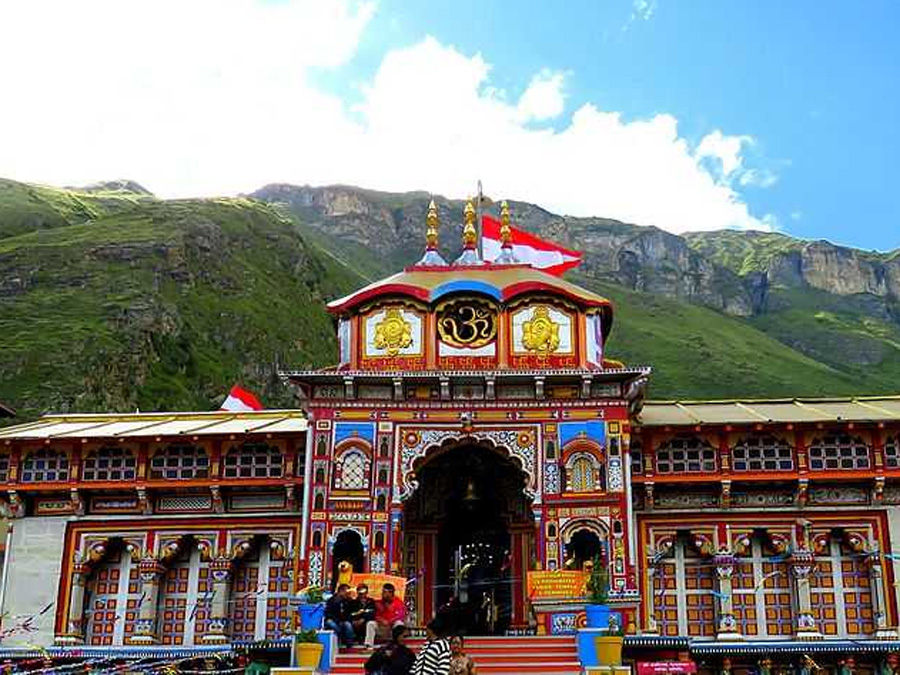
TAPT KUND and SURYA KUND are famous springs of sulfurous water with 55 C. A dip, considered holy and refreshing the body as well as soul, is a must before offerings prayer to Shri Badrinathji. Pujas are held during the opening and the closing of the temple. The temple is open for six months of the year from April-May to October-November, but its day of opening is determined on the day of the Basant Panchami that is in February-March, in some accordance with astrological configurations. The Badrinath temple opens at 04:30 am & closes at 01:00 pm and once again it opens at 04:00 pm & closes at 09:00 pm after the divine song Geet Govind.
Around Badrinath:
Auli: This world-class winter games resort is 57 km from Badrinath Temple. The 3 km long ski slope ranging from a height of 2519 meters to 3049 meters is a major attraction. There are 500 meters long ski lift which carries skiers back to the slope top. The best known seasons are from the last week of December to march.
Hemkund Sahib: Hemkund or the “Snow Lake” nestles at a height of 4329 amidst seven snow-covered mountains, which are collectively called Hemkund Parvat. The sacred star-shaped Gurudwara near the lake is one of the most important Sikh Pilgrims centers. It is believed that Guru Govind Singh Ji, the tenth Sikh Guru meditated here. Saints like Rishi Medhasa of the Markandeya Purana and Lakshman, the brother of Lord ram also performed penance here. A temple dedicated to Lakshman is also located near the Gurudwara. The 15 km trek from Govindghat to Hemkund is very popular. The best time to come here is from July to October.
Joshimath: The winter home of Badrinathji lies on the slopes above the confluence of Alaknanda and Dhauuliganga. It is an important halt en route to Badrinath and base for trekkers to the famous Valley of Flowers. Adi Shankaracharya is said to have gained enlightened here. The main attractions are – Narsingh and Garuda Temple, the Shankaracharya Math and Amar Kalp tree.


